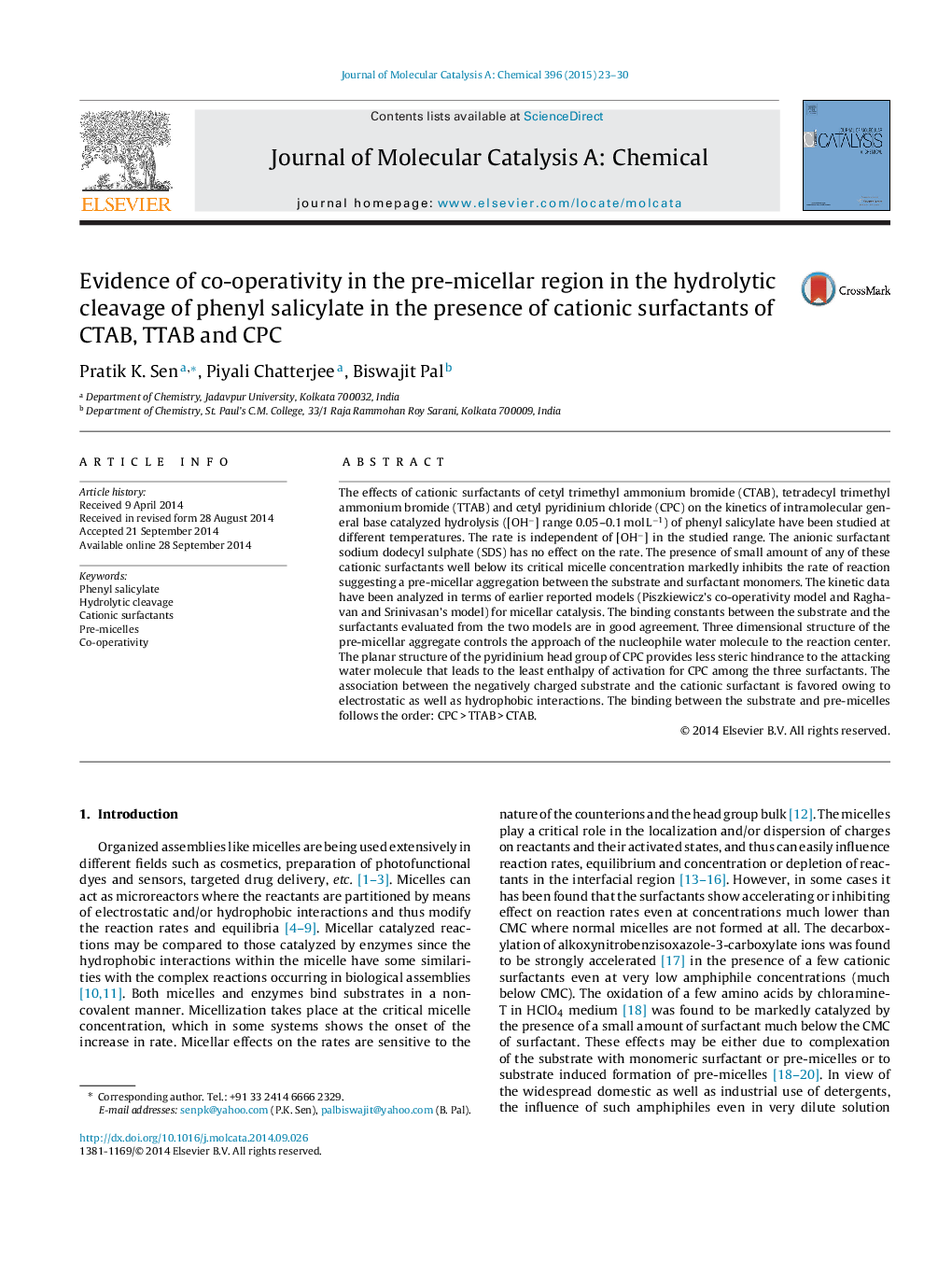| کد مقاله | کد نشریه | سال انتشار | مقاله انگلیسی | نسخه تمام متن |
|---|---|---|---|---|
| 65246 | 48387 | 2015 | 8 صفحه PDF | دانلود رایگان |

• Pre-micelle cluster formation in the hydrolytic cleavage of phenyl salicylate.
• Inhibition of reaction rate by cationic surfactants in the pre-micellar region.
• Electrostatic attraction between anionic substrate and cationic surfactant monomer.
• Retarding effect explained using Piszkiewicz's and Raghavan–Srinivasan's models.
• Substrate–premicelle binding constants are in the order: CPC > TTAB > CTAB.
The effects of cationic surfactants of cetyl trimethyl ammonium bromide (CTAB), tetradecyl trimethyl ammonium bromide (TTAB) and cetyl pyridinium chloride (CPC) on the kinetics of intramolecular general base catalyzed hydrolysis ([OH−] range 0.05–0.1 mol L−1) of phenyl salicylate have been studied at different temperatures. The rate is independent of [OH−] in the studied range. The anionic surfactant sodium dodecyl sulphate (SDS) has no effect on the rate. The presence of small amount of any of these cationic surfactants well below its critical micelle concentration markedly inhibits the rate of reaction suggesting a pre-micellar aggregation between the substrate and surfactant monomers. The kinetic data have been analyzed in terms of earlier reported models (Piszkiewicz's co-operativity model and Raghavan and Srinivasan's model) for micellar catalysis. The binding constants between the substrate and the surfactants evaluated from the two models are in good agreement. Three dimensional structure of the pre-micellar aggregate controls the approach of the nucleophile water molecule to the reaction center. The planar structure of the pyridinium head group of CPC provides less steric hindrance to the attacking water molecule that leads to the least enthalpy of activation for CPC among the three surfactants. The association between the negatively charged substrate and the cationic surfactant is favored owing to electrostatic as well as hydrophobic interactions. The binding between the substrate and pre-micelles follows the order: CPC > TTAB > CTAB.
The pre-micellar aggregates between the negatively charged substrate and positively charged surfactant monomers restrict the entry of water molecule to the reaction site, accounts for the inhibition of the hydrolytic cleavage of phenyl salicylate. Both electrostatic and hydrophobic interactions between the reactant and the surfactant monomer are responsible for the pre-micellar cluster.Figure optionsDownload high-quality image (160 K)Download as PowerPoint slide
Journal: Journal of Molecular Catalysis A: Chemical - Volume 396, January 2015, Pages 23–30